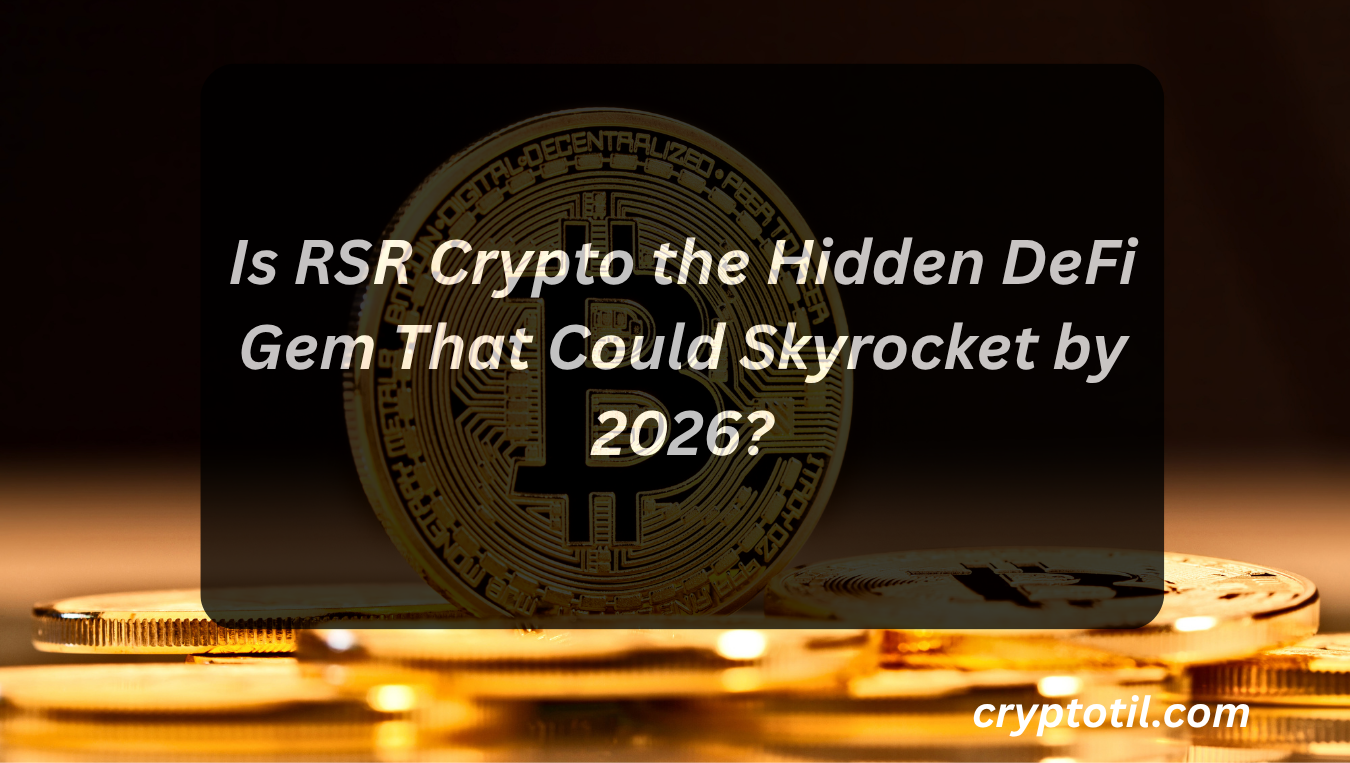In the ever-shifting world of cryptocurrency, where excitement often revolves around Bitcoin and Ethereum, some lesser-known projects quietly build meaningful value. Reserve Rights (RSR) is one such project that’s starting to attract attention—but could it truly become a breakout success by 2026? Here’s an in-depth look at RSR’s story, its recent moves, and why it might matter more than you realize.
What Is RSR, Really?
Reserve Rights (RSR) is the utility and governance token for the Reserve protocol—a dual-token stablecoin ecosystem. Its primary role is to back and stabilise the system’s stablecoins (RTokens), which are pegged to real-world assets like the US dollar and managed through a basket of cryptocurrencies.
While RSV (Reserve Stablecoin) acts as the stable, dollar-pegged asset, RSR is the dynamic token that steps in when the stablecoin veers off its peg, deploying arbitrage strategies to bring things back in balance . In return for locking RSR, holders influence protocol governance and earn various rewards.
A History of Purpose, Not Hype
Launched in mid-2019, RSR didn’t ride a hype wave—it grew quietly. Its value rose alongside the development of RSV, establishing a slow but steady presence in the crypto ecosystem. Today, it’s seen as a utility token tied directly to a working stablecoin system, not just a speculative play.
The RSR token supply maxes out at 100 billion, with approximately 58 billion circulating currently, giving it a market cap around $370 million—ranking it among the top-tier DeFi tokens .
Latest Protocol Developments
This year, Reserve has introduced innovations solidifying RSR’s role:
- Governance via vote-locking: Token holders can now lock their RSR to vote on key protocol decisions like index composition and fee structures.
- Index DTFs (Decentralized Token Funds): These basket tokens currently hold around $3.5 million in assets and are gaining traction in on-chain.
- Permissionless index creation: Soon, users will be able to design and manage their own on-chain baskets—potentially expanding protocol usage exponentially.
These enhancements shift Reserve from a simple stablecoin to a governance-driven DeFi protocol.
Where RSR Stands Now
Currently trading around $0.0065, RSR is down from its all-time high yet shows promising fundamentals. Its one-year high hovered near $0.116, though it bottomed around $0.0017 last year .
Trading volume is healthy—approximately $25 million daily across major exchanges like Binance, Huobi, and OKX. Its market position and steady utility-based design suggest a more sustainable model than hype-driven tokens.
Experts Weigh In: Price Predictions
Various analysts project cautious but optimistic growth:
- CoinCodex anticipates that by mid-2025, RSR will trade between $0.0063 and $0.0073, averaging around $0.0067—a modest ~14% upside from current levels.
- Binance pegs year-end 2025 around $0.0064, then slowly rising toward $0.0083 by 2030 with annual ~5% gains.
- TradingBeasts & WalletInvestor give a cautious outlook, forecasting a 2025 range of $0.0069–$0.0074, with potential dips.
- DigitalCoinPrice suggests strong technicals might push RSR over $0.0083 by late 2025 after breaking moving average resistance.
There’s no consensus, but most models point to steady, unexciting growth rather than moonshot gains.
Why RSR Might Just Deliver More Than Expected
1. Strong Use Case
RSR underpins Reserve’s stablecoin system, making it structurally essential. As DeFi expands and demand for on-chain USD-pegged assets grows, RSR utility could see direct benefit.
2. Protocol Enhancements
Governance tools and Index DTF growth transition Reserve from a simple stablecoin to decentralized investment infrastructure, potentially attracting more staking and capital flows.
3. Liquidity & Exchange Support
Active trading across high-volume platforms keeps RSR liquid and accessible—unlike many mid-cap crypto assets .
4. On-Chain Metrics
Technical signals like a rally in trading volume or moving-average crossovers could trigger short-term interest spikes.
Risks That Matter
Market Volatility
RSR’s price is still tied to broader crypto sentiment. Bear markets can dampen even solid fundamentals.
Regulatory Pressure
Stablecoin platforms face increased oversight. Regulatory intervention in DeFi could slow RSR’s outlook.
Competition
Several protocols vying for stablecoin prominence exist. Reserve must continue proving its stronger on-chain features.
Roadmap to 2026: A Balanced Outlook
Here’s a more detailed price forecast based on consensus moderate/bullish scenarios:
| Year | Low Estimate | High Estimate | Comments |
|---|---|---|---|
| 2025 | $0.0060 | $0.0085 | Vote-locking and Index growth spark mild run |
| 2026 | $0.0070 | $0.0100 | On-chain governance + DeFi pipelines mature |
| 2027–30 | $0.0080 | $0.0150 | Higher adoption, macro tailwinds |
This trajectory implies 2–3x upside over two years—solid but measured growth, given RSR’s design and market positioning.
Final Take: Should You Watch RSR?
Reserve Rights may not be the crypto superstar overnight, but it’s one of the few mid-cap tokens with genuine utility and developmental momentum. Its growth won’t be headline-grabbing, but it may offer stability and solid gains—rare in DeFi.
If you believe in the future of decentralized stablecoins backed by transparent governance, RSR could be a steady cornerstone in a diversified crypto portfolio. Watch protocol upgrades, regulatory signals, and how Index DTF adoption evolves—they’ll be the true signal of long-term growth.
In a crypto market where humidity and hype rules, RSR feels like a rational whisper of potential—quiet, functional, and just maybe, undervalued.
Bottom line?
RSR isn’t a hit-the-fundamentals lottery ticket, but it could be a dependable long-term bet—worth watching closely as DeFi matures into serious financial infrastructure.
